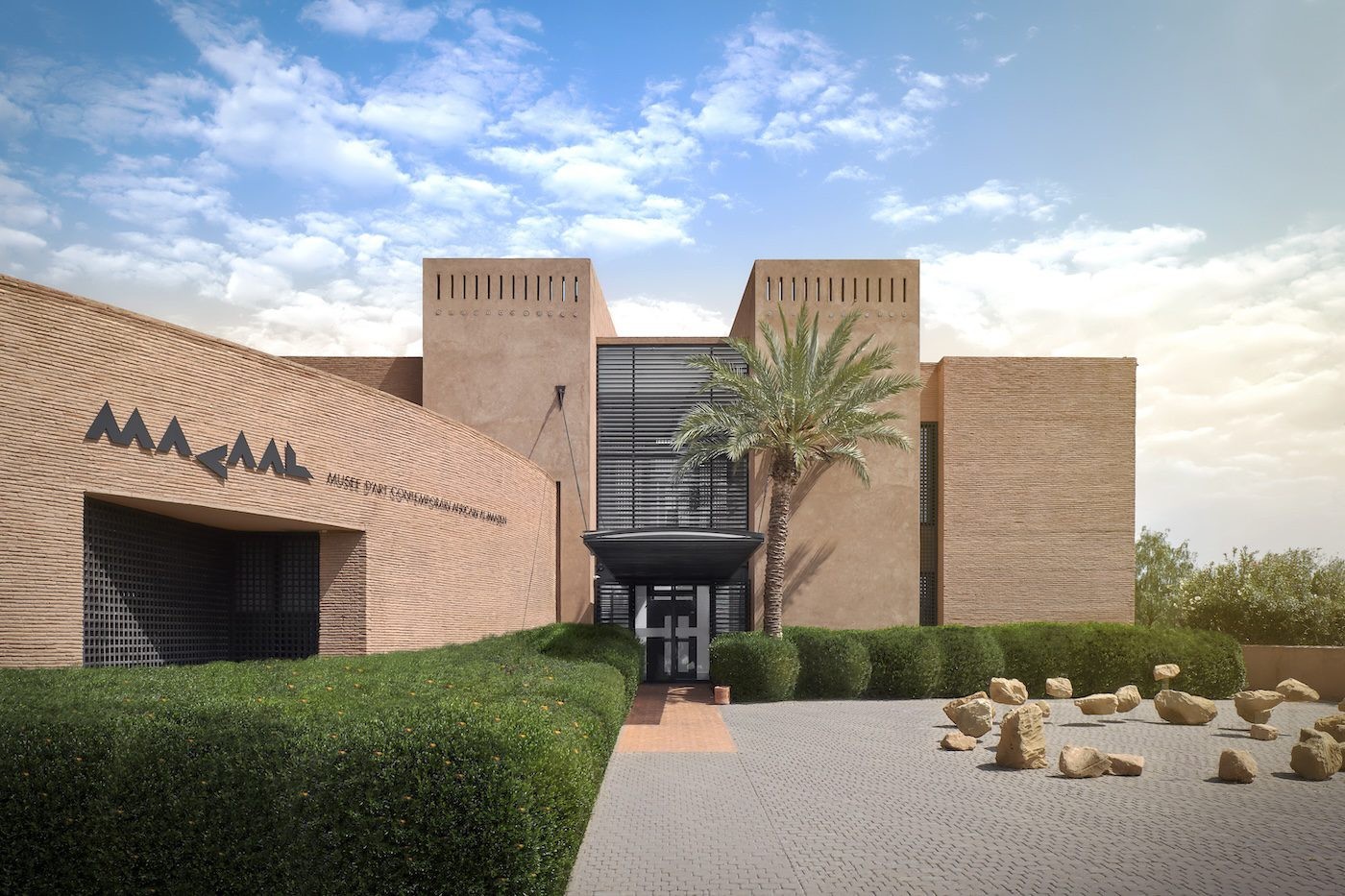Five Things You Need to Know About the John Randle Center Before It Opens
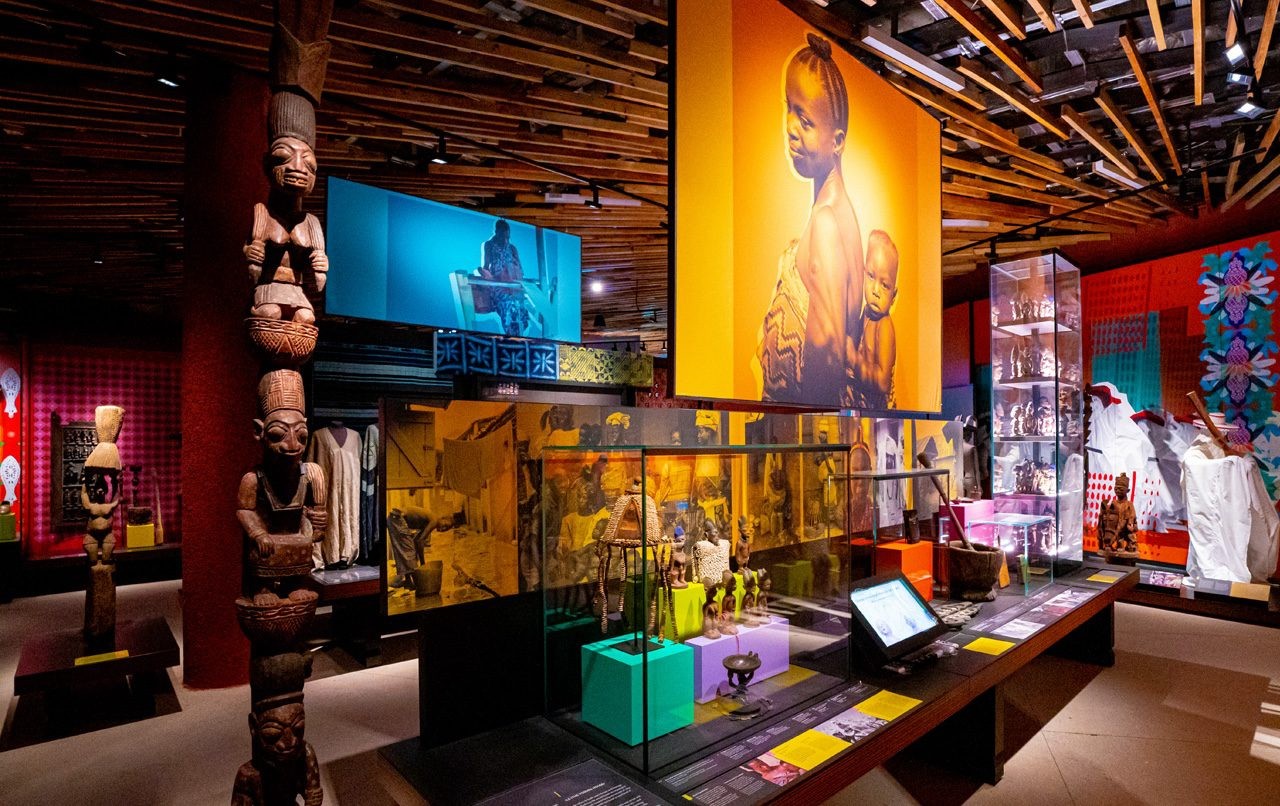
26 September 2024
Magazine C& Magazine
Words Obidike Okafor
5 min de lecture
C& author Obidike Okafor shares what to expect from the new architectural marvel in Nigeria’s art capital.
More than a year and a half after its grand inauguration by former President Muhammadu Buhari, the John Randle Center for Yoruba Culture and History remains an enigma. Nestled in the heart of Lagos, this highly anticipated museum has kept its doors closed to the public, stirring curiosity and frustration among art enthusiasts, artists, curators, and the general public. As reports now suggest an opening in November or December, here are five key points to know before the John Randle Center finally welcomes its eager visitors.
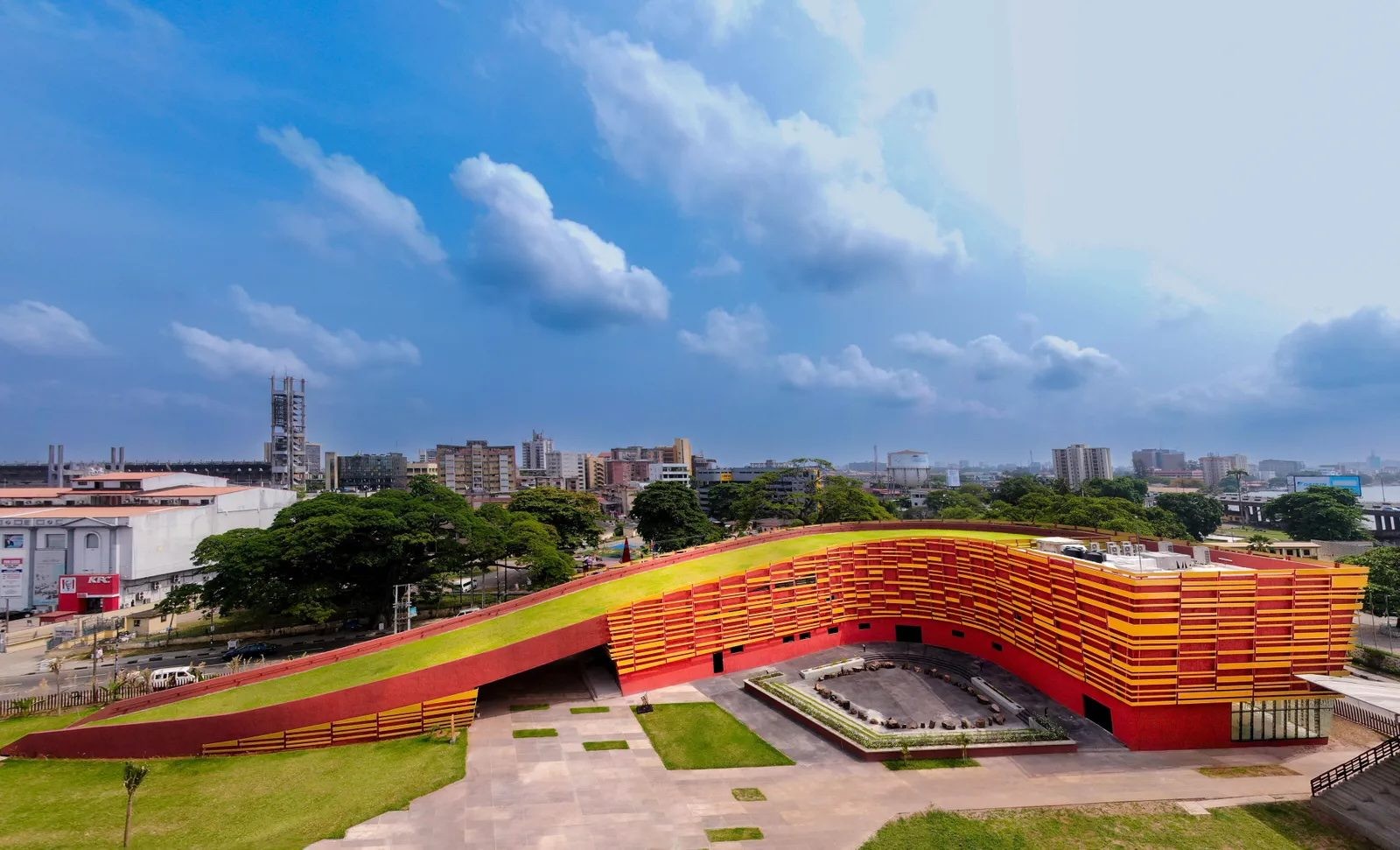
Courtesy of The John Randle Centre.
1. A Cultural Beacon, Yet Unreachable
Despite being envisioned as a cultural beacon, the John Randle Center has been largely out of reach. Since its inauguration, the museum has only opened for select events, accessible either through “special interventions” or formal proposals to the Lagos State Ministry of Tourism which oversees the museum. For some, like myself, the only way in has been by gate-crashing.
This restricted access has been a significant source of disappointment. Artist Olumide Onadipe was turned away during the Lagos Biennial in January, mirroring the frustration of many who see the center as a missed chance to offer an alternative to the nearby National Museum. Ozolua Uhakheme, a newspaper arts editor, highlighted how the center is losing valuable opportunities by delaying opening to the public.
In my own quest to explore the center’s innovatively designed fusion of Yoruba history, genealogy, and cosmology, I resorted to pretending to be part of a dance troupe set to perform at a future event at the venue.
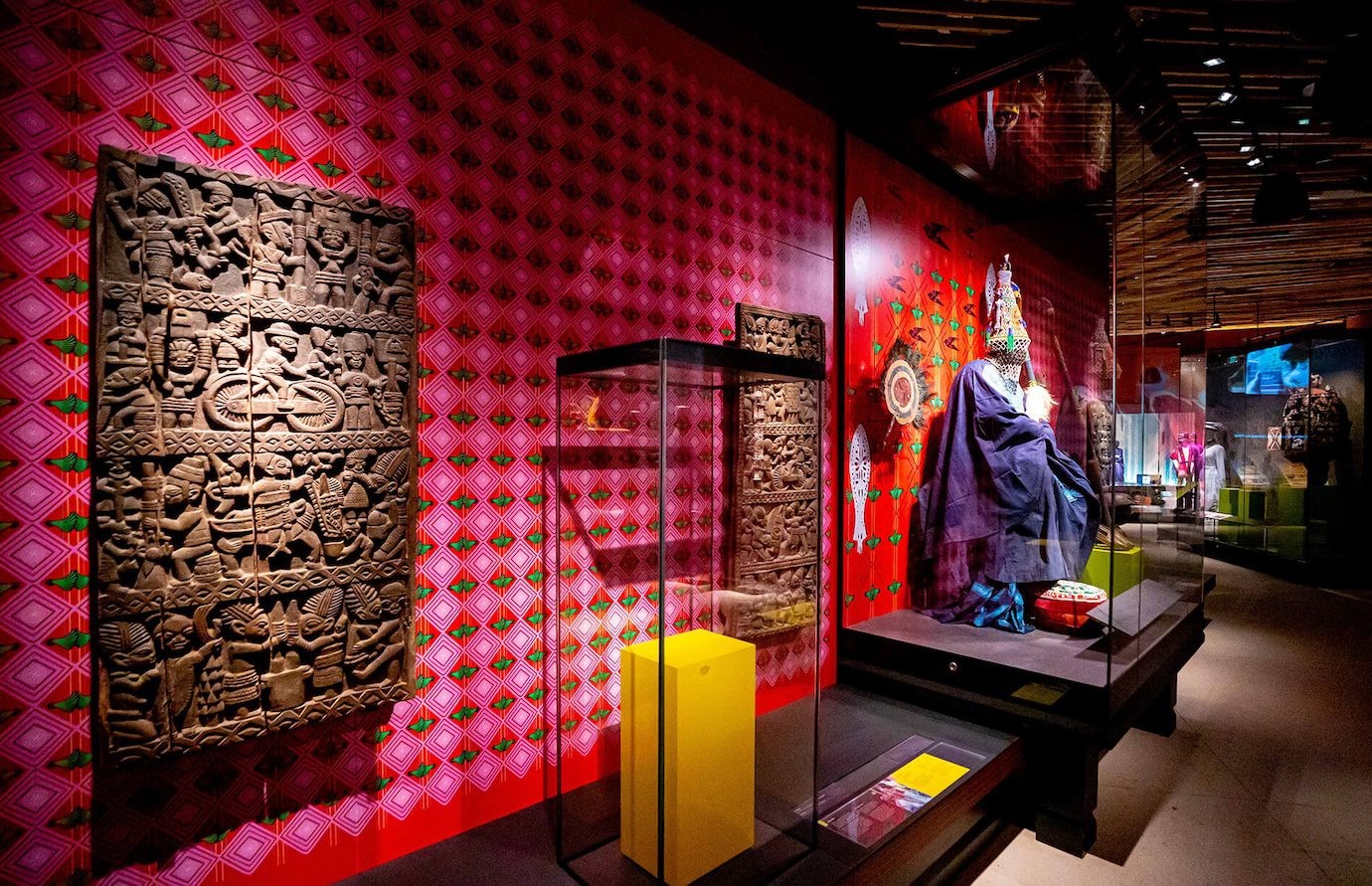
Installation view at John Randle Centre for Yoruba Culture & History. Courtesy of Obinna Emelike
2. A Curatorially Innovative Celebration of Yoruba Storytelling and Culture
Those fortunate enough to gain entry speak highly of the museum’s innovative design and curatorial approach. The John Randle Center aims to provide a profound exploration of Yoruba culture, history, and philosophy.
The center aspires to be more than a static display of artifacts by immersing visitors in the vibrant traditions of Yoruba storytelling and cultural expression. Beginning with a timeline of the Yoruba origin story, it demonstrates the interconnectedness of Yoruba art and language as visual and verbal expressions of Oriki (praise poetry). Visitors encounter the Ile Ori, or House of the Head, a symbolic space representing pan-Yoruba deities; shrines highlight various orishas, spirits that embody natural forces and concepts.
Storytelling, a vital aspect of Yoruba culture, gets a designated “court” featuring trees, a traditional setting for passing down knowledge and history. A prominent image of the Oba of Lagos sets the stage. Floor-to-ceiling screens display videos of vibrant masquerade festivals across Yorubaland, while another section delves into the colonial era through historical objects and virtual reality experiences. Masquerades take center stage in another dedicated section, introducing visitors to notable Eyo masquerades like Adimu, Eyo Alaketepupo, and Eyo Olegede.
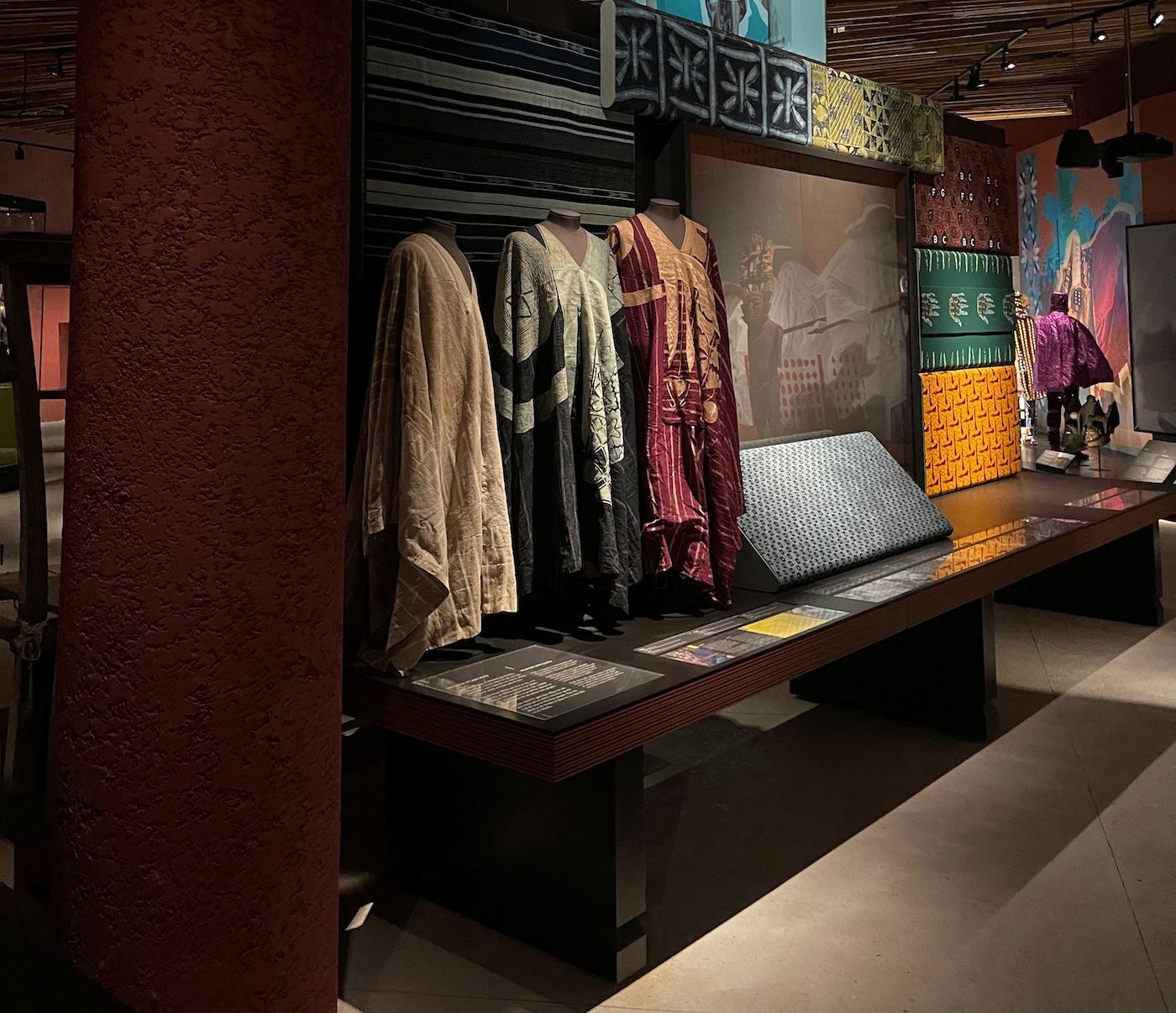
Installation view at John Randle Centre for Yoruba Culture & History. Courtesy of Obinna Emelike.
3. A Rich Collection of Yoruba Artifacts and Exhibits
The museum boasts a comprehensive collection that spans the breadth of Yoruba history and culture. Its textile section showcases traditional weaving looms, fabrics, and royal attire, while exhibitions of palaces, paintings, and iconic photographs provide deeper insights into Yoruba aesthetics. A 3D display envisions the future of Yoruba art and culture, creating a dynamic space that connects past, present, and future.
A media section is dedicated to iconic Yoruba musicians and cultural figures, including the legendary Fela Anikulapo-Kuti, a pioneer of Afrobeat music and a social justice champion. Colonial-era file cabinets, safes, gramophones, and communication tools provide a window into the past, while other artifacts honor the legacy of Samuel Ajayi Crowther, the first African Anglican bishop of West Africa. There are displays of traditional weaving looms, fabrics, and royal attire. Palaces, paintings, and iconic photographs round out the exhibition.
I found the exhibition to weave all these elements together in an interactive narrative. I was struck by the resilience of the Yoruba people, their capacity for transformation, and the display’s forward-looking perspective.
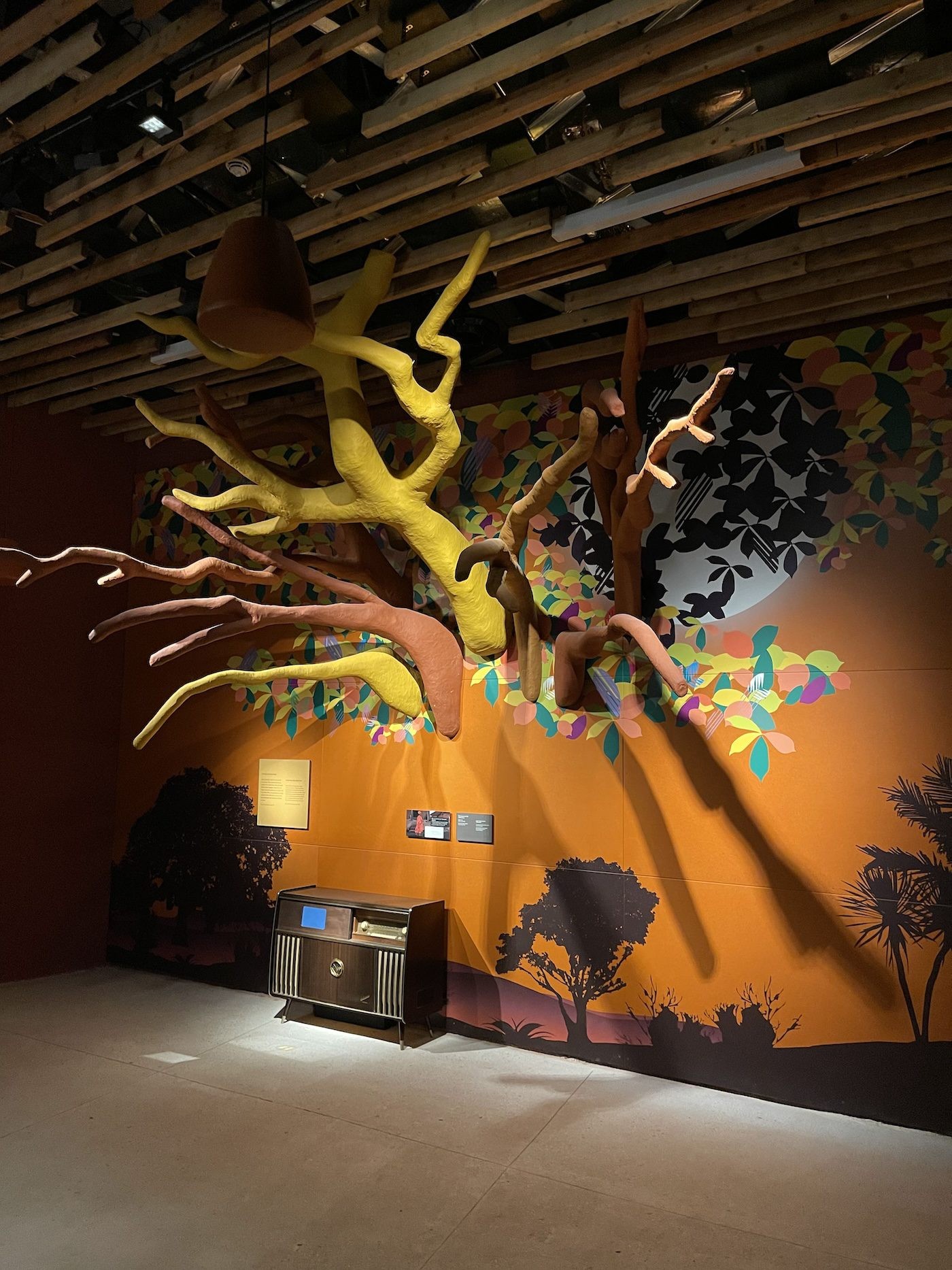
Installation view at John Randle Centre for Yoruba Culture & History. Courtesy of Obinna Emelike
4. The Bureaucratic Hurdles
Why the long delay in launching such a significant cultural institution in Lagos and Nigeria? According to insiders, the primary reason is the Lagos State Ministry of Tourism’s difficulty in finding a curator. Many qualified candidates have reportedly turned down the role due to perceived government interference, a challenge the center must overcome to secure its future.
The John Randle Center needs to overcome these bureaucratic hurdles and establish a strong curatorial team that can bring its ambitious vision to life in time for its anticipated opening later this year.
Curators like Ayo Oshodi, who finally secured space for her pop-up gallery exhibition The Origin of All Poems after ten proposal submissions and six months of waiting, underscores the challenges. She couldn’t publicize her event due to the center’s prolonged closure, and hopes for a more straightforward process for artists and curators in the future.
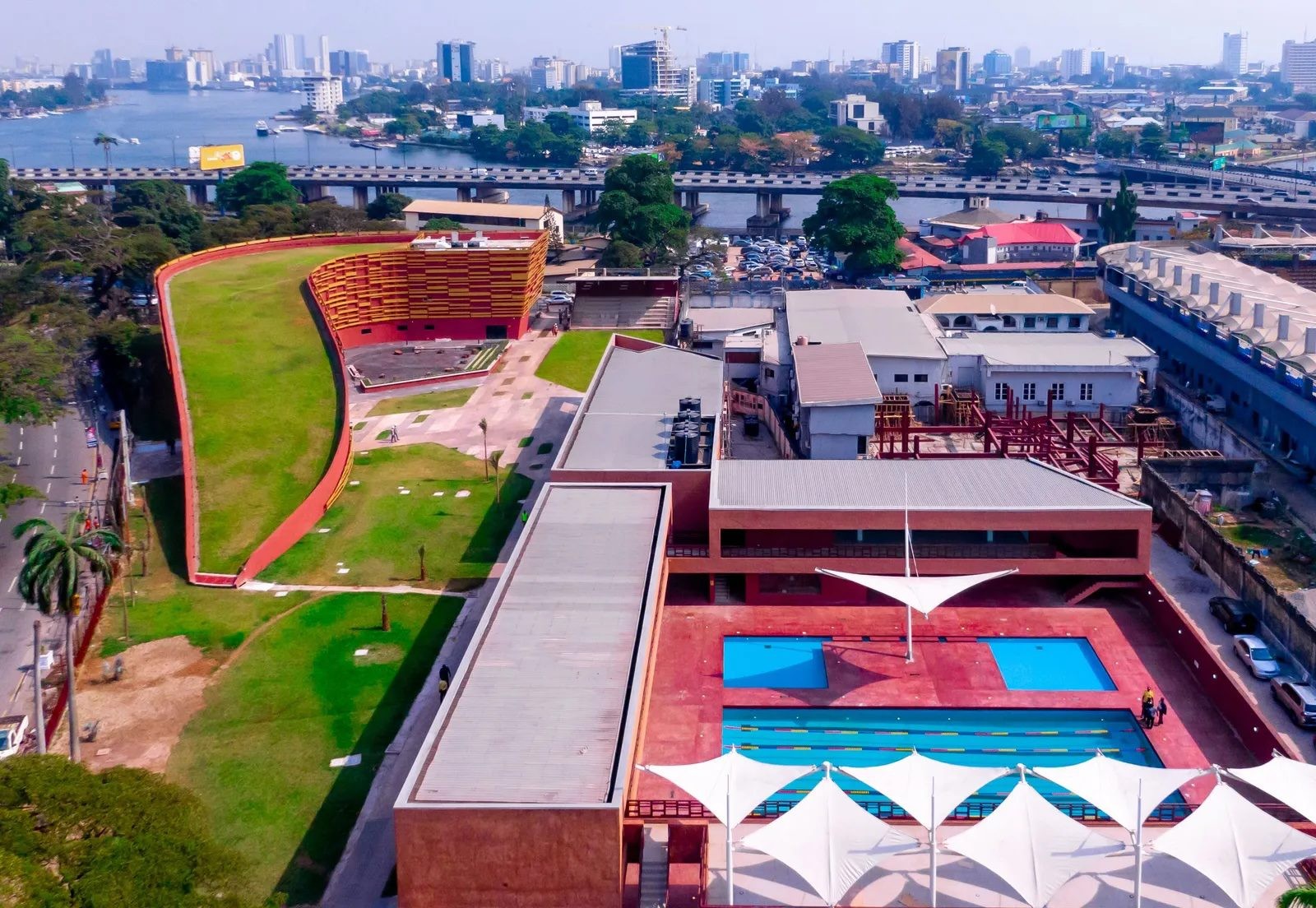
Bird’s view of the whole John Randle Center for Yoruba Culture and History. Courtesy of The John Randle Centre.
5. The Importance of Opening Its Doors to All
The center should strive to be more inclusive rather than limiting access through special interventions and endless proposals. These practices could foster suspicions of favoritism toward a select few by the time the museum finally opens its doors to the public.
As we await the opening, the John Randle Center has a unique opportunity to set a new standard for museums in Nigeria – one that is inclusive, dynamic, and reflective of the rich cultural heritage it seeks to preserve and promote – and be an alternative art space for curators and artists. Until then, the public remains hopeful that the museum will soon become a vibrant part of Lagos’s cultural landscape.
Based in Lagos, Obidike Okafor is a content consultant, freelance art journalist, and documentary filmmaker.
Plus d'articles de

Nnena Kalu remporte le Turner Prize 2025

Yina Jiménez Suriel y Raphael Fonseca son los directores artísticos de la Bienal Sequences de Islandia

MAM São Paulo anuncia Diane Lima como curadora do 39º Panorama da Arte Brasileira
Plus d'articles de
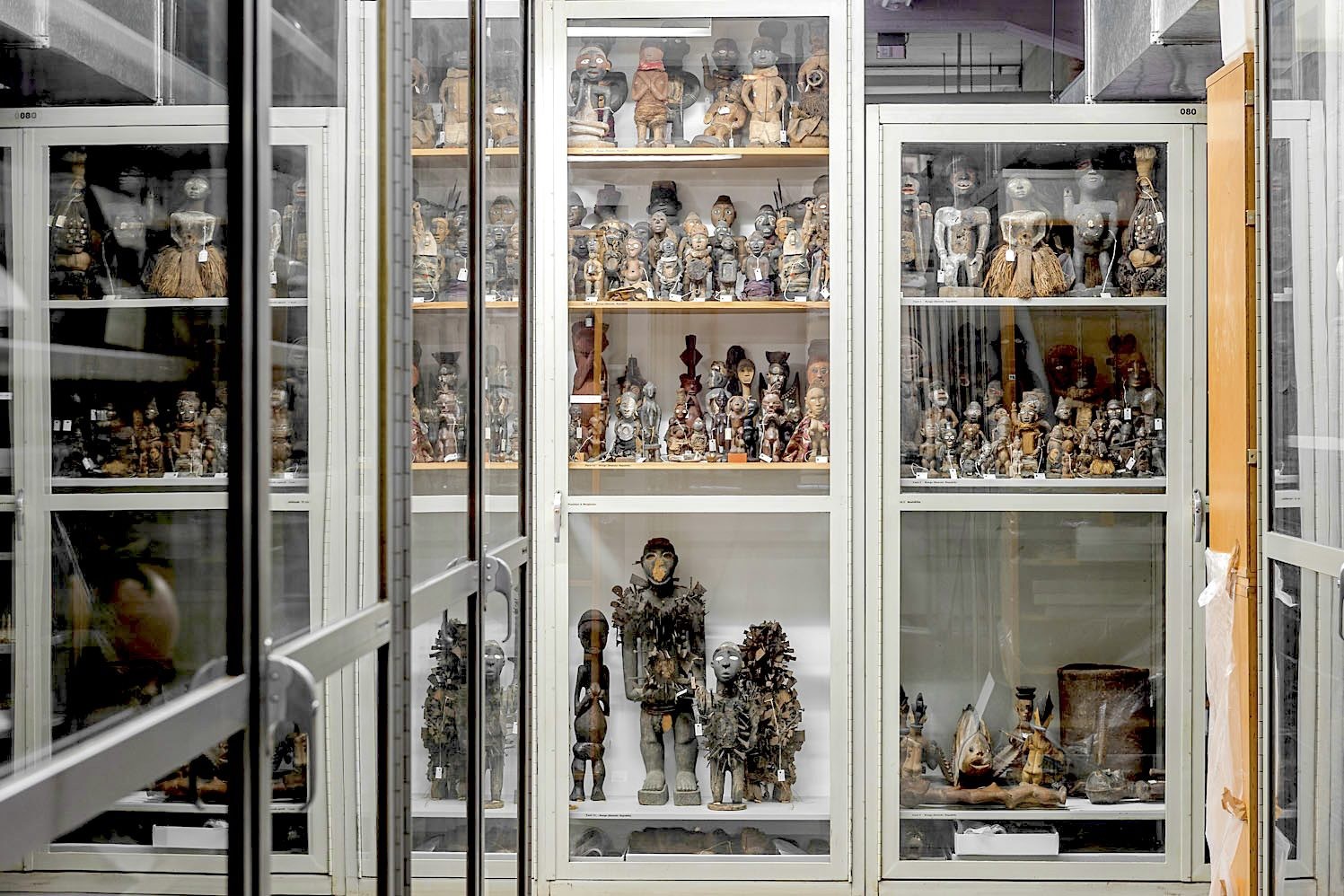
Examiner les traces dé/coloniales à travers les collections coloniales
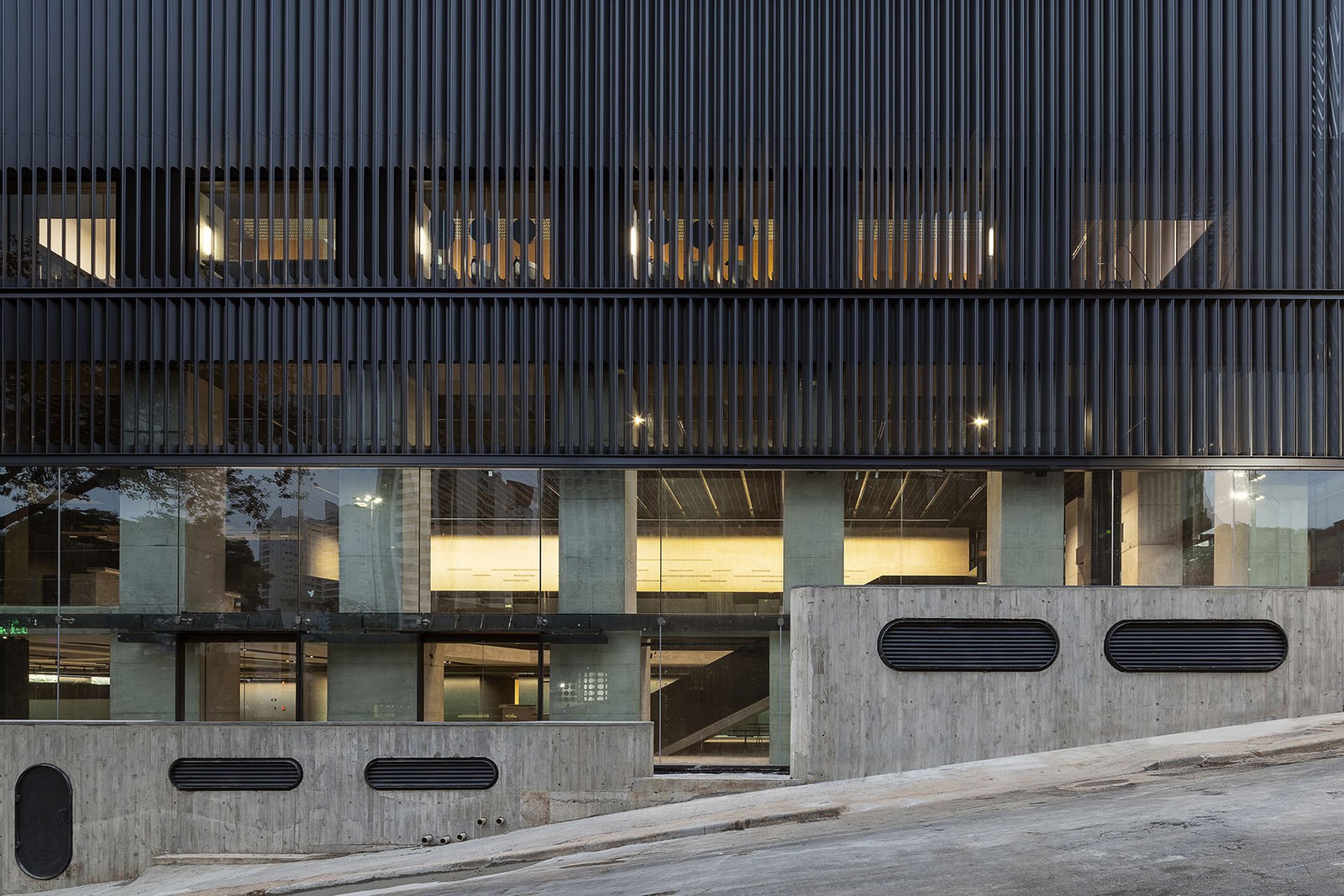
MASP inaugura novo edifício
